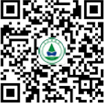Improved illumination homogeneity increased accuracies of derived light utilization efficiency for aquatic photosynthesis-irradiance curve analysis
| 論文作者 | Qian Hu,* , Aiwen Zhong, Ian Hawes |
| 刊物 | Plant Physiology and Biochemistry |
| 標識符 | 10.1016/j.plaphy.2023.108027 |
| 摘要 | Accumulating knowledge of photo-physiological acclimation and adaptation in aquatic phototrophs to altered environmental factors are valuable for managing and conserving aquatic ecosystems. Photosynthesis-irradiance curve (PI curve) analysis is an essential technique to assess the photo-physiological states of and environmental stresses on photosystems. For PI curve analysis, replicates were rarely homogeneously illuminated, which could generate variations potentially obscuring treatment effects or lead to considerable errors. Here we present an incubation apparatus with a novel configuration of illuminating unit that supplied a gradient of irradiances with improved homogeneity. The achieved homogeneity exceeds that of other homogeneous illuminating apparatus reported for photosynthetic research. We used the elaborated apparatus to develop PI curves for S. pectinata photo-acclimated to contrasting light conditions in both greenhouse and field scenarios. Photo-acclimation to lower irradiances enhanced both maximum photosynthetic rates and light utilization efficiencies in general. And improved homogeneity for PI curve analysis most likely reduced variations of derived light utilization efficiency compared to those using conventional incubation apparatus. The elaborated incubation apparatus could provide insights into developments of illumination techniques for photosynthetic studies and has the potential to refine the subtleties of photo-acclimation studies. |




